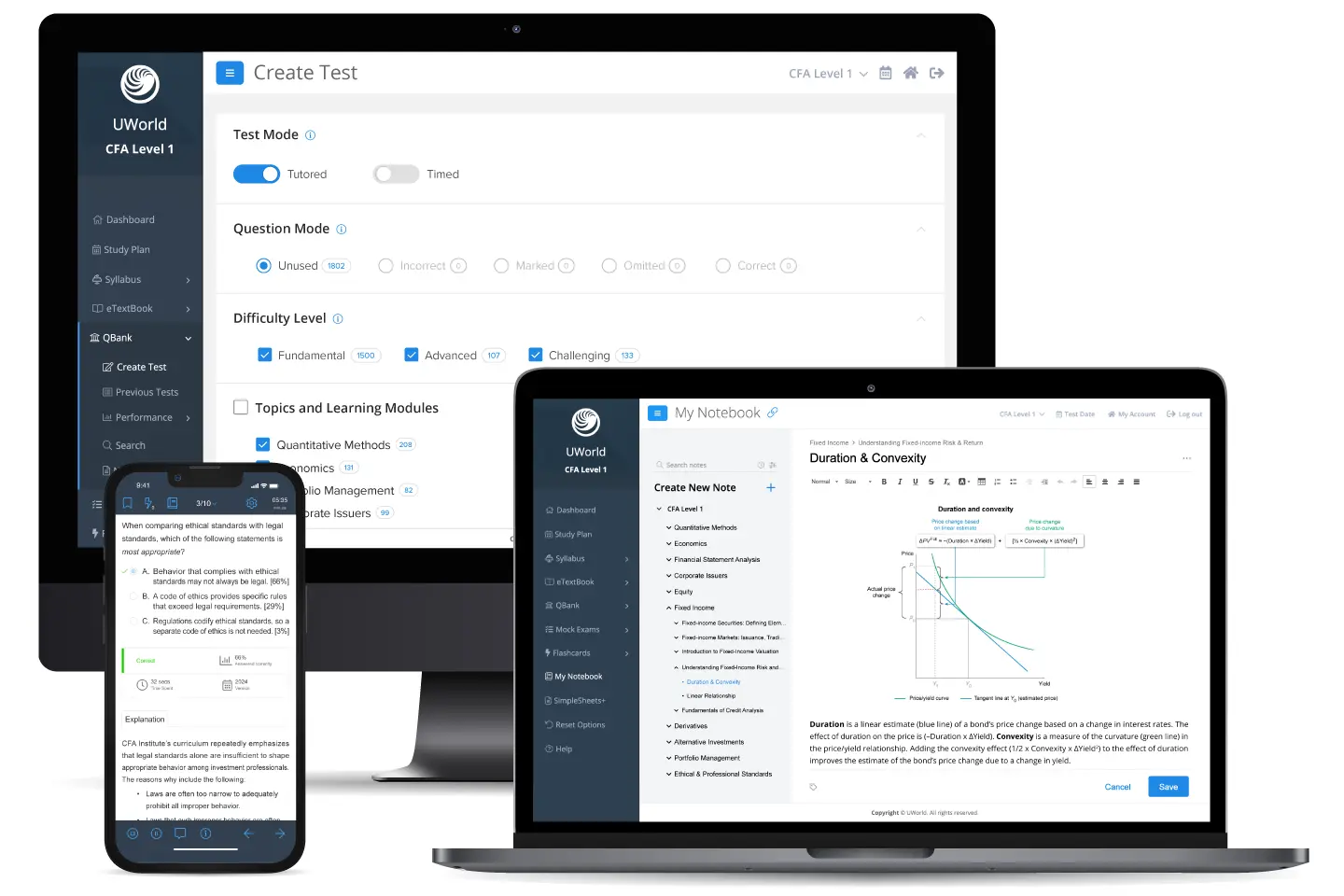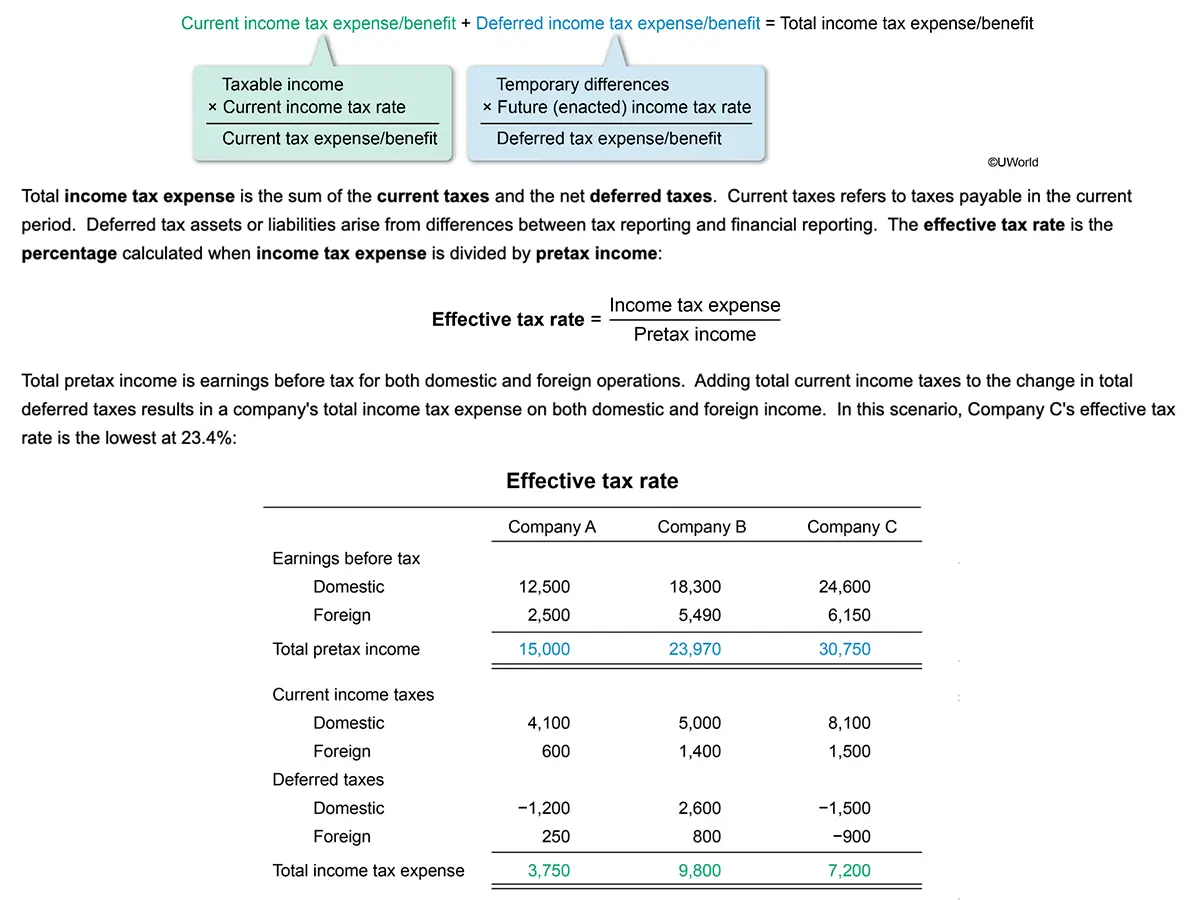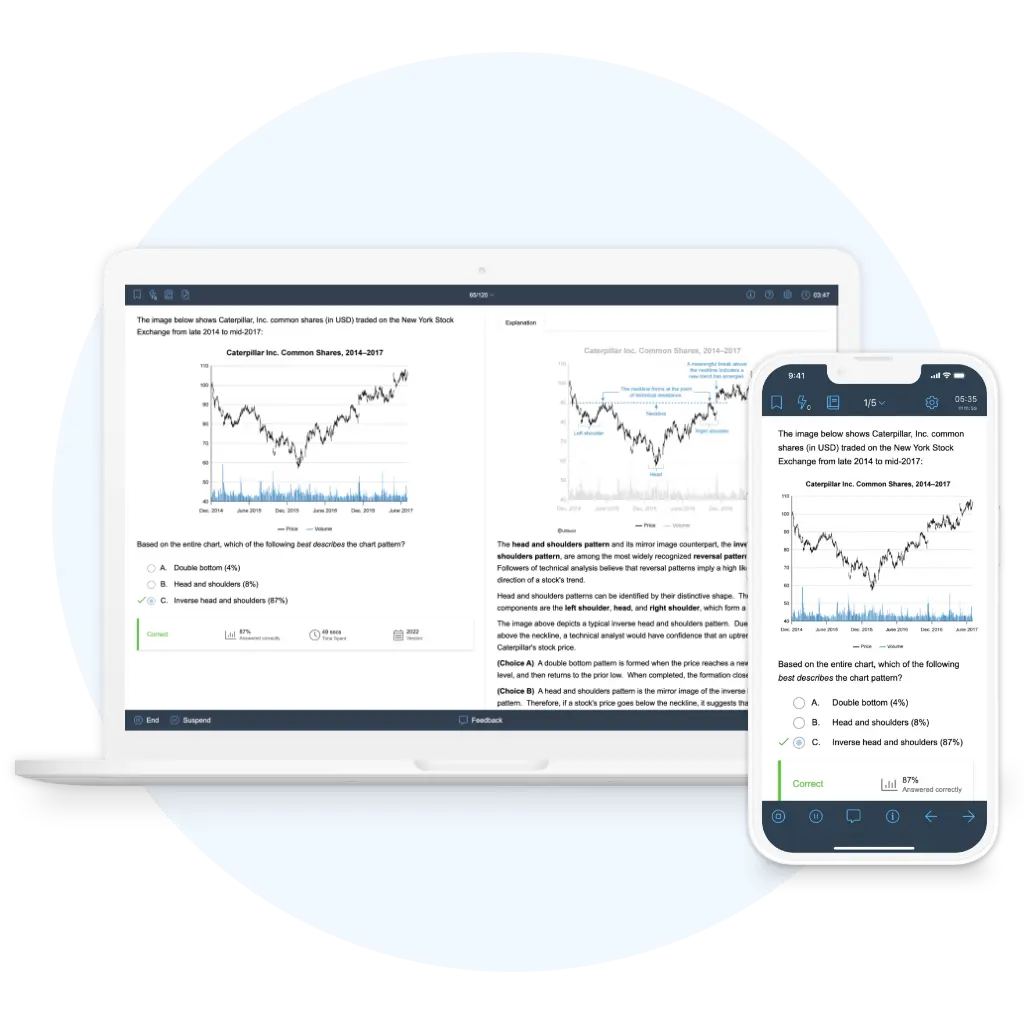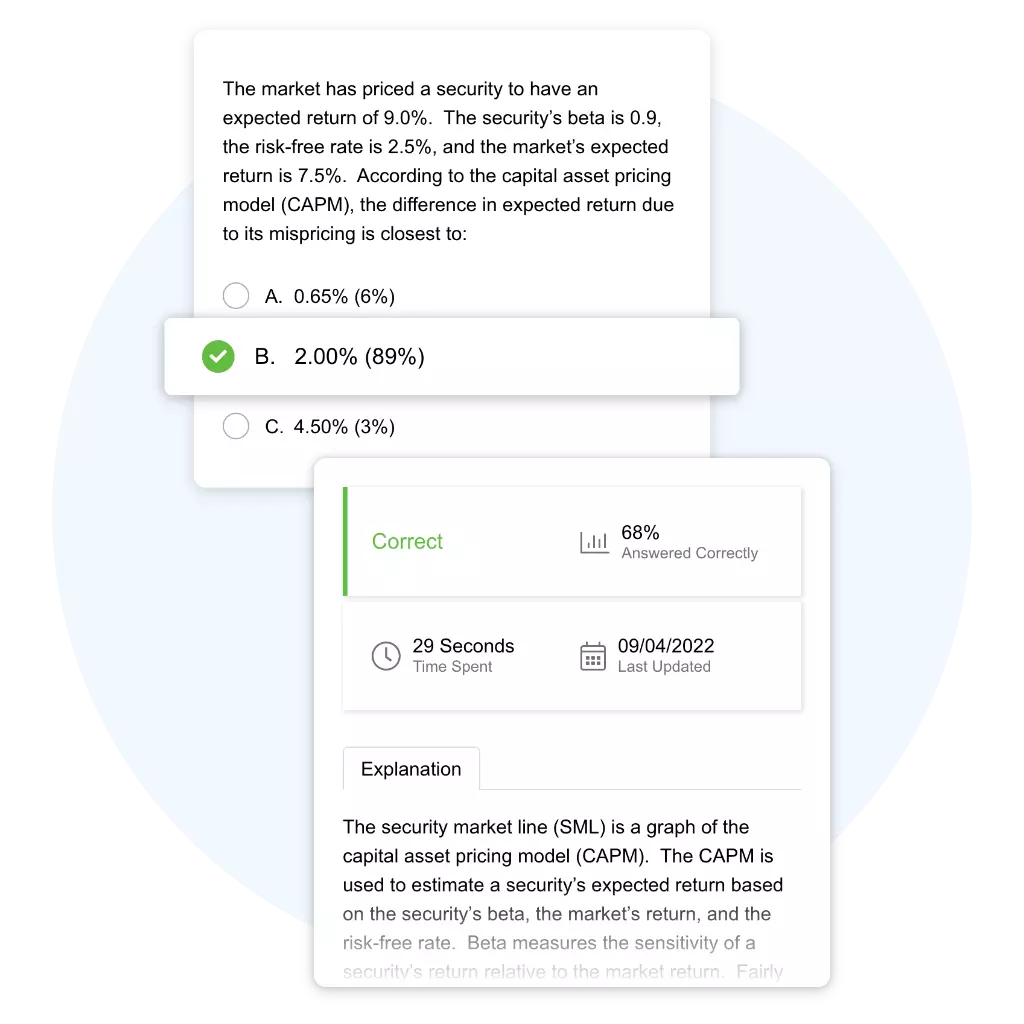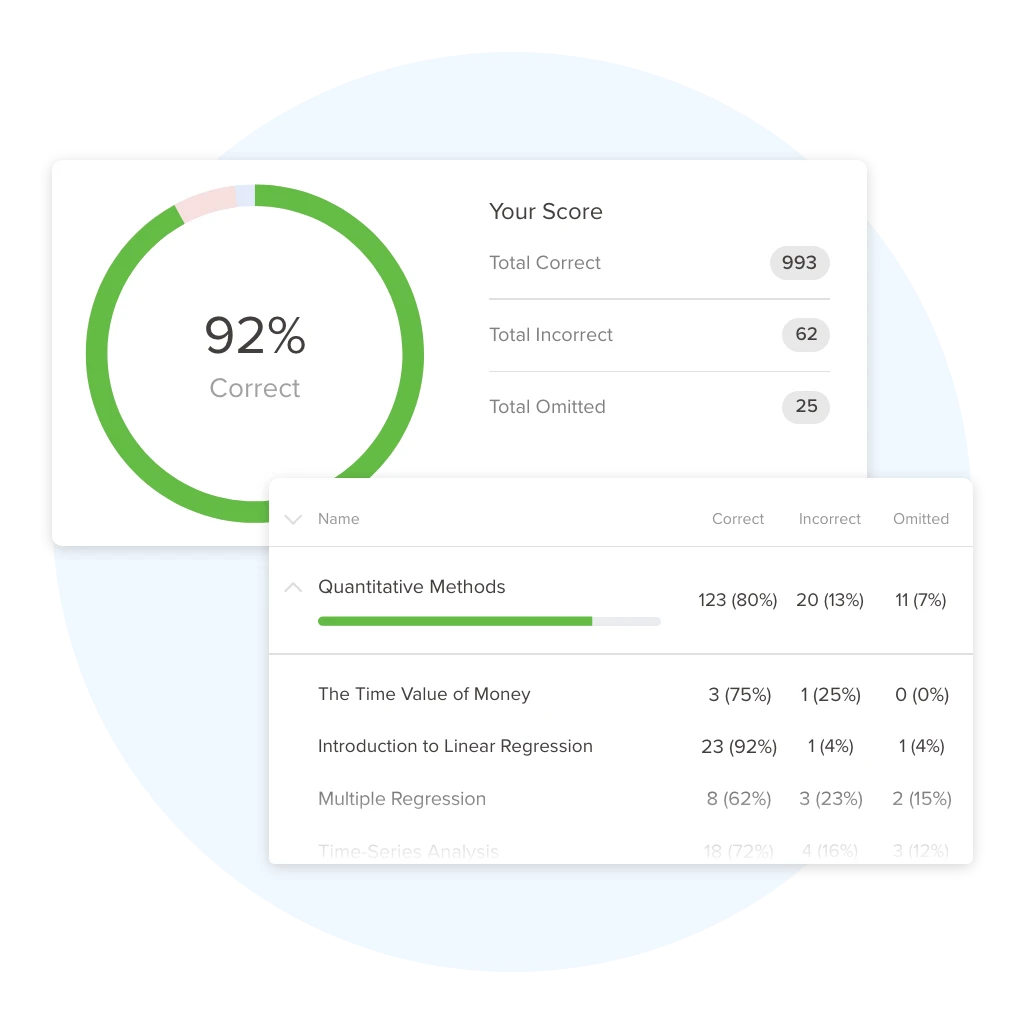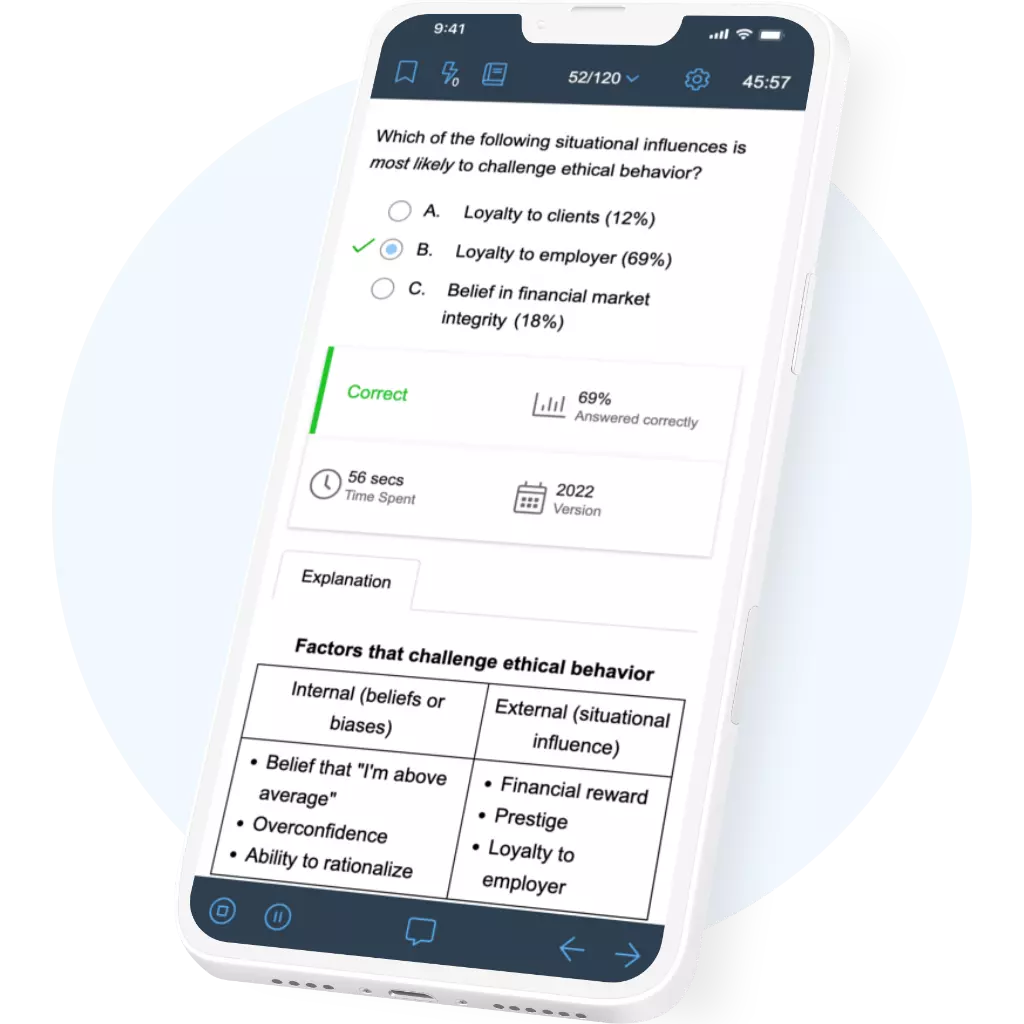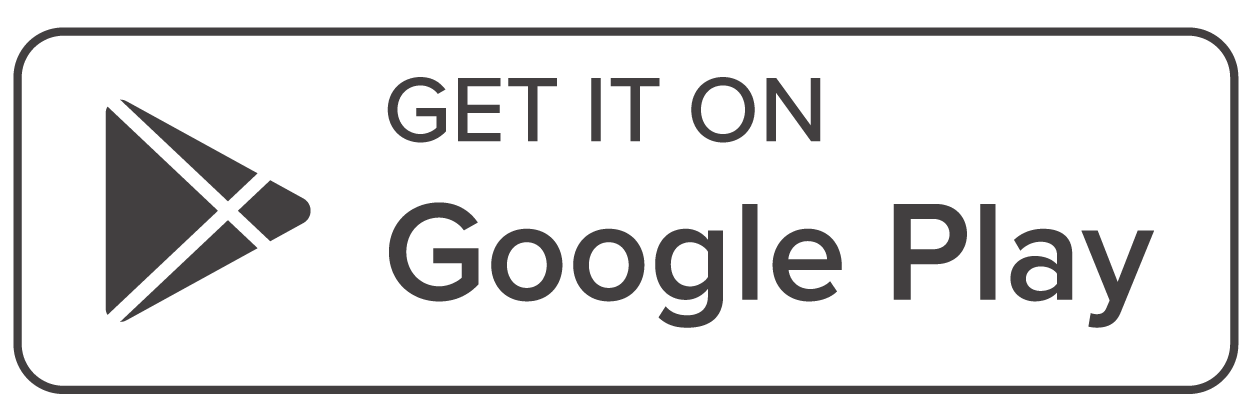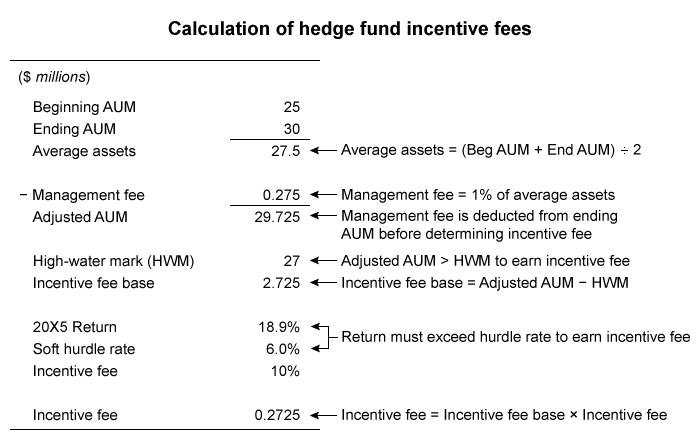CFA® Level 1 Question Bank
How Our Practice Questions Build Exam Readiness
Master Concepts Faster
Quiz Smarter, Not Harder
Learn the “Why” Behind Every Answer
Simulate Exam
Conditions
Turn Weaknesses into Strengths
Replicate the Exam Environment
Score Higher on Level 1 with UWorld’s Quality Learning Tools
Use Up-to-Date CFA QBank Aligned to the Exam
Learn by Doing
Simplify Your Learning
Multiple Ways to Study, Multiple Ways to Save
Whether you’re searching for a complete CFA Level 1 course with unlimited access time or a supplement, we have you covered.
Explore our free trial and see how UWorld CFA can boost your Prep
Explore our free trial and see how UWorld CFA can boost your Prep
See What Our Students
Are Saying…

You can custom-make your own tests to target questions you have gotten wrong previously which is awesome. The simulated exam interface is also a super cool tool that I think will just be one less thing for me to worry about on exam day…"

Excellent explanation for each question. Application-based questions are very nuanced that further help strengthen the underlying topics. What I liked most, specifically about UWold’s QBank, is that unlike questions on other platforms which can be done as part of practice…"

I have tried Kaplan, CFA Ecosystem and I can tell you that you are the best. Great difficult questions, but the most worthy thing is explanation after question that gives a comprehensive revision of everything related to the topic in the given question…"
Hear From Our Past CFA Candidates

You can custom-make your own tests to target questions you have gotten wrong previously which is awesome. The simulated exam interface is also a super cool tool that I think will just be one less thing for me to worry about on exam day…"

Excellent explanation for each question. Application-based questions are very nuanced that further help strengthen the underlying topics. What I liked most, specifically about UWold’s QBank, is that unlike questions on other platforms which can be done as part of practice…"

I have tried Kaplan, CFA Ecosystem and I can tell you that you are the best. Great difficult questions, but the most worthy thing is explanation after question that gives a comprehensive revision of everything related to the topic in the given question…"
Frequently Asked Questions (FAQs)
Our in-house team of charterholders and subject matter experts craft the CFA Level 1 QBank questions and answer explanations.
According to feedback from our users, the UWorld CFA Level 1 practice questions closely resemble those in the actual CFA Exam, with many users feeling a sense of familiarity during the exam.
Our CFA Level 1 free trial offers access to over 100 practice questions, complete with detailed answer explanations, step-by-step problem-solving guides, and professionally designed illustrations.
The UWorld practice questions for CFA Level 1 are developed by charterholders and finance experts, aiming to match or surpass the difficulty level of the actual CFA Exam.
